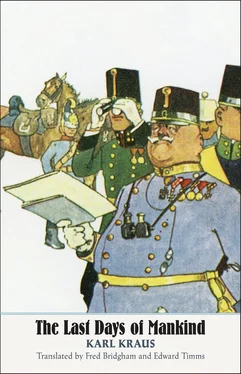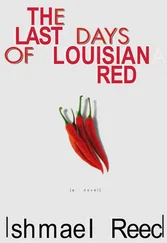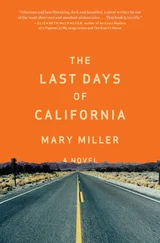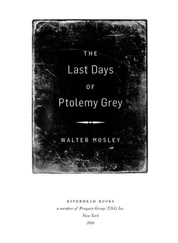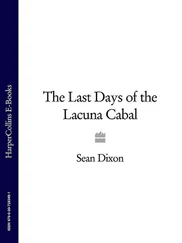References
Karl Kraus (editor), Die Fackel , Vienna, April 1899 to June 1936 (for the images of Benedikt and Northcliffe, see F 445–53, January 1917, p. 33; for the concept of “Einschöpfung”, see F 572–6, June 1921, page 62)
Karl Kraus, Die letztenTage der Menschheit , Vienna: Verlag Die Fackel, 1922
Robert Graves, Goodbye to All That: An Autobiography , London: Jonathan Cape, 1929 (quotation from page 283)
Karl Kraus, The Last Days of Mankind , abridged and edited by Frederick Ungar, tr. Alexander Gode and Sue Ellen Wright, New York: Frederick Ungar Publishing, 1974
Karl Kraus, In These Great Times: A Karl Kraus Reader , Montreal: Engendra Press, 1976; contains “‘The Last Days of Mankind’: Selections arranged and translated by Max Knight and Joseph Fabry” (pages 157–258)
Karl Kraus, Die letztenTage der Menschheit , ed. Kurt Krolop, 2 vols., Berlin: Verlag Volk und Welt, 1978
Karl Kraus, “The Last Days of Mankind”, unpublished translation by Robert David MacDonald of selected scenes for the Edinburgh Festival production of 1982 (with Giles Havergal in the role of Kraus the Grouse)
Leo A. Lensing, “‘Kinodramatisch’: Cinema in Karl Kraus’s Die Fackel and Die letztenTage der Menschheit” , in German Quarterly , Vol. 55, No. 4 (Nov. 1982), pages 480–98.
Karl Kraus, Die letztenTage der Menschheit , ed. Christian Wagenknecht, Frankfurt: Suhrkamp, 1986
Edward Timms, Karl Kraus — Apocalyptic Satirist: Culture and Catastrophe in Habsburg Vienna , New Haven and London: Yale University Press, 1986
Fred Bridgham, The Friendly German-English Dictionary , London: Libris, 1996
Karl Kraus, Les Derniers jours de l’humanité: Version intégrale , tr. Jean-Louis Besson and Henri Christophe, Marseilles: Agone, 2005
Edward Timms, Karl Kraus — Apocalyptic Satirist: The Post-War Crisis and the Rise of the Swastika , New Haven and London: Yale University Press, 2005
Fred Bridgham (editor), The First World War as a Clash of Cultures , Rochester, NY: Camden House, 2006
Anton Hölzer, Das Lächeln der Henker: Der unbekannte Krieg gegen die Zivilbevölkerung 1914–1918 , Darmstadt: Primus, 2006
Agnes Pistorius, “kolossal montiert”: Ein Lexikon zu Karl Kraus, “Die letzten Tage der Menschheit” , Vienna: Ibera Verlag, 2011
Edward Timms, Taking Up the Torch: English Institutions, German Dialectics and Multicultural Commitments , Brighton and Portland, Ont.: Sussex Academic Press, 2011
Unless otherwise specified, military, political, and diplomatic positions are Austrian or Austro-Hungarian, the location Vienna, and the war the First World War. An arrow indicates a separate entry. Significant examples from the play are denoted by act and scene in parentheses, while page references are given wherever possible. To identify locations, grid references in the form, for example, Plan B2 or Map C3 relate respectively to the Vienna City Plan (page vi) and the Map of European War Zones (page 646). The abbreviation F + issue number refers to Kraus’s revue Die Fackel .
ADRIATIC (Map D4/E6), branch of the Mediterranean giving the Austro-Hungarian Empire access to the sea, celebrated in 1913 by an exhibition in Vienna (→Prater); The Habsburg crown land of Trieste (1382–1919) and adjacent coastal villages had developed into the Austrian Riviera, linked by rail to Vienna in 1857. After 1915 control over the Adriatic was hotly disputed in naval engagements with the Italians: 42f, 62, 87, 142, 227ff, 456f.
AEHRENTHAL, Count Alois Lexa von (1854–1912), foreign minister (1906–12) who pursued a more aggressive policy towards South Slav separatism, including the annexation of →Bosnia-Herzegovina: 124.
AERIAL BOMBARDMENT, pioneered in January 1915 by Zeppelin attacks on English coastal towns; denounced by the Grumbler (I, 29): 159f, 164, 227f, 240f, 264, 421, 501, 504, 539, 543f, 580f, 587f.
AGE OF GRANDEUR, leitmotif taken from the colossal painting by Ludwig Koch (1866–1934) entitled Die große Zeit , which transforms the nineteenth-century slogan into a depiction of troops led by →Emperor Franz Joseph, →Conrad von Hötzendorf, and →Kaiser Wilhelm II on horseback, and which presides over the play’s apocalyptic climax (V, 55): xv, xvi, 61, 73, 74, 95, 104, 127, 132, 162, 164, 165, 169f, 212, 255, 299, 325, 329, 340, 420, 470, 497, 517, 520, 539.
ALBANIA (Map F5), occupied by Austro-Hungarian army in 1915 against the wishes of the German High Command: 411ff, 458, 530.
ALBRECHT, Archduke (1897–1955), →Archduke Friedrich’s only son: 275.
ALEXANDRA, Tsarina Feodorovna (1872–1918), m. →Tsar Nicholas II (1894): 360ff.
ALIX OF HESSE →Alexandra Feodorovna.
ALLMER, Anton (1881–1946), “secular” RC priest in →Galicia (1914–15) and Italy (1916–17): 179f.
ALSACE-LORRAINE (Map B3/C3), French provinces annexed by the German Reich in 1871: 352, 503.
ALSERSTRASSE (Plan A1): 427.
AMALFI , Italian battle cruiser, sunk in →Adriatic by German U-boat (July 1915): 142.
AM I TO BE SPARED NOTHING? (Mir bleibt doch nichts erspart), leitmotif, Franz Joseph’s recurrent “lamentatio” (IV, 31): 376, 378f, 390ff.
ANDRIAN ZU WERBURG, Baron Leopold (“Poldi”) von (1875–1951), a member of →Hermann Bahr’s modernist circle in the 1890s, mocked by Kraus for the decadence of his writings; later an influential diplomat and advocate of territorial expansion, ambassador in German-occupied →Warsaw (1915–17), and participant in negotiations at →Brest-Litovsk: 108f, 123.
d’ANNUNZIO, Gabriele (1863–1938), patriotic Italian author who became an aviator during war, dropping propaganda leaflets over Vienna in August 1918: 245, 280.
ANTON GRÜSSER, fictional restaurant, its proprietor an early exponent of irritating interruptions (F 261, October 1908): 204ff.
ANZENGRUBER, Ludwig (1839–1889), dramatist and novelist; Vreni: main character in moralistic drama of peasant life Der Meineidbauer (The Peasant as Perjurer, 1871): 360.
APOLLO, variety and (after 1914) operetta theatre in Gumpendorferstrasse (Plan C4), under →Ben Tibur: 48, 251.
APOSTELGASSE, continuation of Landstrasser Hauptstrasse (Plan F5): 177.
APPONYI, Count Albert Georg von (1846–1933), Hungarian politician, minister of culture and education (1917–18): 485.
ARTSTETTEN (Map E3), village in Lower Austria, site of Hohenberg Castle, residence and final resting place of →Franz Ferdinand and wife →Sophie Chotek: 37, 122.
ARZ VON STRAUSSENBURG (1857–1935), Baron, lieutenant — field marshal, succeeded →Conrad as Chief of Staff (1917): 399.
ASIAGO (Map D4), centre of “Sette comuni” in Vicenza, taken by →Conrad’s army group (9 November 1917), totally destroyed during war: 365f, 420, 479.
ASINARA, island off NW Sardinia (Map C5); prisoner-of-war camp where 5,000
Austro-Hungarian prisoners died in cholera epidemic (1916): 309, 545.
ASQUITH, Herbert Henry (1852–1928), prime minister under whom Britain entered the war: 289.
“A THUND’ROUS ROAR” →“Watch on the Rhine”.
AUERSPERG, Prince Karl (“Cary”, 1859–1927), privy councillor and member of Upper House: 123.
AUFFENBERG VON KOMAROV, Moritz (1852–1928), general, war minister (1911–12), victor at the battle of Komarov (26 August 1914), scapegoat for defeat of Fourth Army at →Lemberg (September 1914): 53, 101ff.
AUGUSTA, Archduchess (1875–1964), m. →Josef August (1893), active in nursing the wounded: 309.
AUSTRIAN FACE, satirical leitmotif symbolized by the Frontispiece Kraus chose for his play, a postcard showing “grinning faces, both civilians and officers proud of their honour, crowding around the corpse of →Caesare Battisti to make sure they get their picture on the postcard” (IV, 29). The leitmotiv ironizes the title of →Felix Salten’s Das österreichische Antlitz (1910), a collection of sentimental essays about Austria: 307f, 309, 324, 382f, 421, 488f, 549.
Читать дальше
